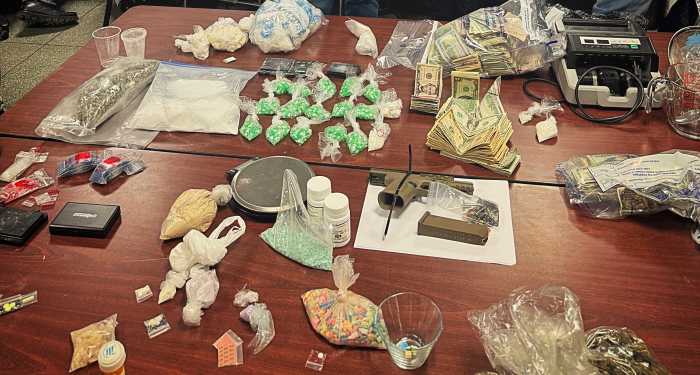Last week, Joe Galindo’s efforts finally paid off. He saw a rat in the trap he had set in front of his Jackson Heights building, at 37-30 73rd Street.
“It was so heavy, you wouldn’t believe it. It looked like a cat, with a long tail,” Galindo said, adding that the gray rat, still alive, had sores all over its body. “It looked like it was infected. It was so disgusting. It was screaming like a baby.”
The rat died after Galindo gave it some poison, but his neighborhood’s problem did not.
During the past year and a half, Jackson Heights has been invaded by an influx of rodents, according to residents of the neighborhood.
“On a regular basis we are getting complaints from residents,” said Giovanna Reid, district manager of Community Board 3, which includes Jackson Heights, East Elmhurst and North Corona. “We have a rodent infestation.”
At night, Galindo said the rats, which he noted were as big as rabbits, take over 73rd Street.
“Every other night you see them in the driveway eating food,” Galindo said, explaining that rats are nesting around his property and that he regularly catches them outside his residence. “Everyone in my building and across the street is complaining about the rats.”
Other people living in his building agreed that on their block, they have more rats than one would normally see on the city streets. Besides, Galindo said, on a recent morning, a neighbor who lives just down the block found a rat when she got in her car.
“This is not acceptable, this is gross and disgusting,” Galindo fumed.
Apart from being disgusting, rodents such as rats are known to carry diseases that can be transmitted to humans in many ways - through animal bite, contact with animal waste, consuming food or water contaminated by rodent waste or through parasites, which use rodents and humans as hosts. Breathing in dried rodent waste that is contaminated might also lead to disease transmission.
However, it is not just the local residents and Community Board that is taking notice of the unsightly creatures.
“Rodent problems are a recurring issue [in Jackson Heights],” said Councilmember Helen Sears, who represents the area. Like community board 3, Sears’ office has been forwarding residents’ rodent-related complaints to the city’s Department of Health and Mental Hygiene (DOHMH).
As a result, according to the DOHMH, since January of 2008, close to 200 pest-related inspections have been conducted within the community board. These have resulted in 50 notices of violation, meaning that pest control teams observed rodents or conditions conducive to rodent activity.
In addition, as recently as September 5, a pest control team observed rodents and rodent-conducive conditions at two location on Galindo’s block, and violation notices will be sent, according to DOHMH.
One of the things that attract rats is garbage - the number one source of food for them. Overflowing trashcans as well as rotten produce, Styrofoam food containers and coffee cups on the ground are a common sight at night on 73rd Street and other busy stretches of Jackson Heights.
The litter on the ground usually comes from the customers of outdoor food vendors, who stay open until the wee hours of the morning or some that remain open 24-hours. In addition, the gutters on these streets are also filled with garbage.
However, these streets are cleaned every day, but only between 7:30 a.m. and 3:30 p.m., which gives many opportunities for litter to accumulate during the night.
Meanwhile, Reid believes another factor in the neighborhood responsible for rodent activity is the heavy construction around the area.
“The problem is widening as they [the rodents] do move,” Reid said, explaining that the demolition makes the rodents disperse and find new places where they can live and eat.




































